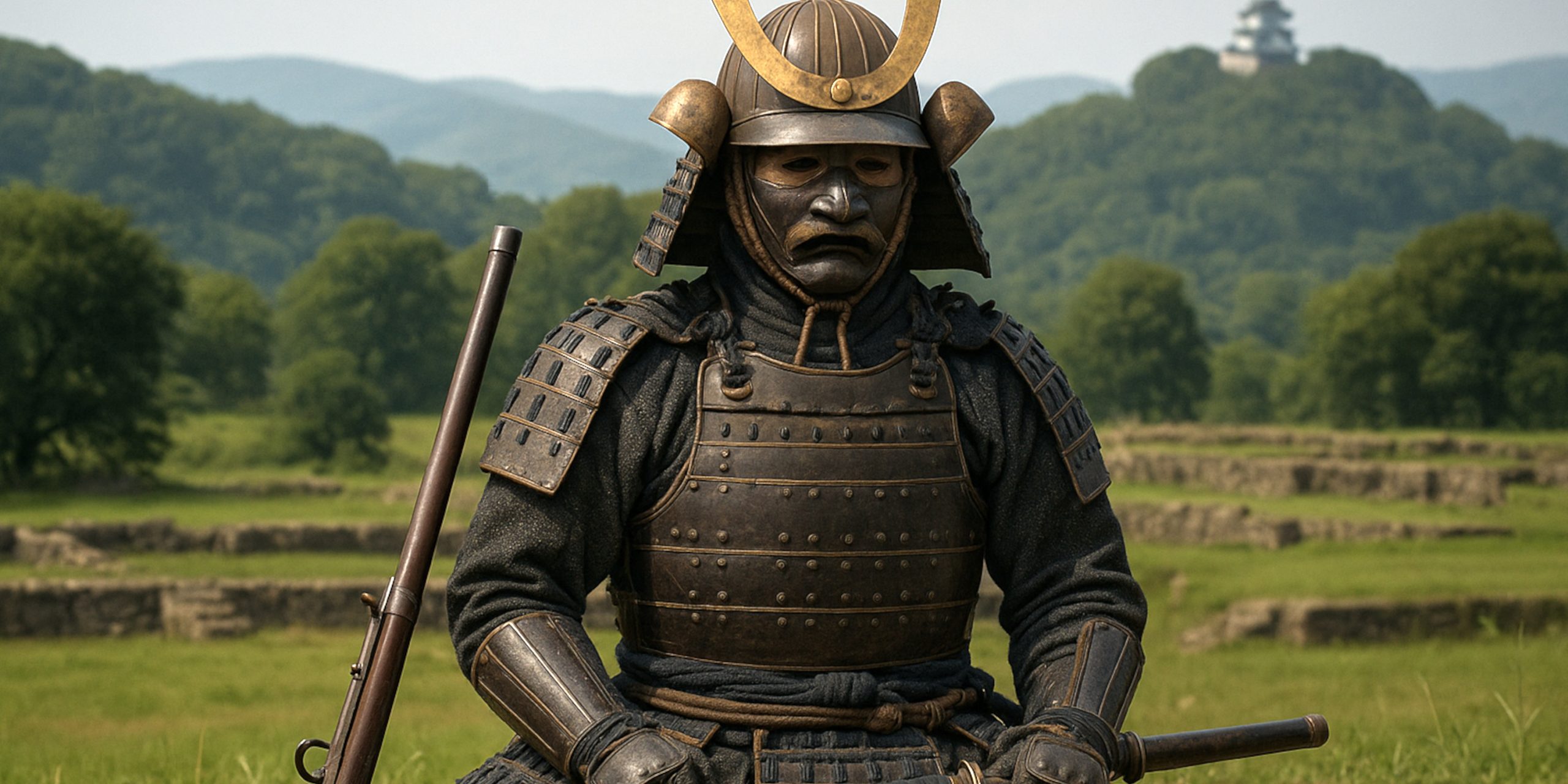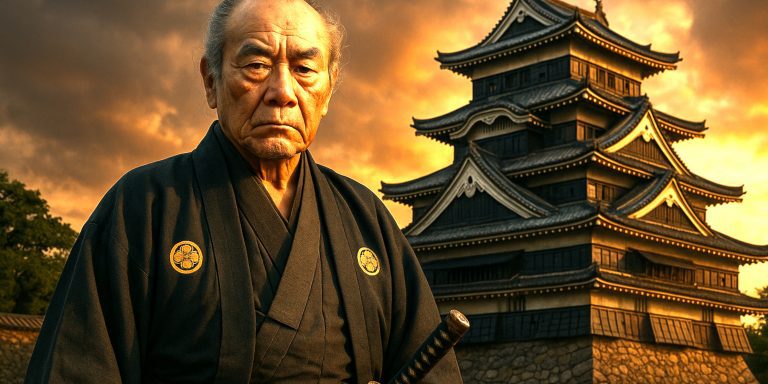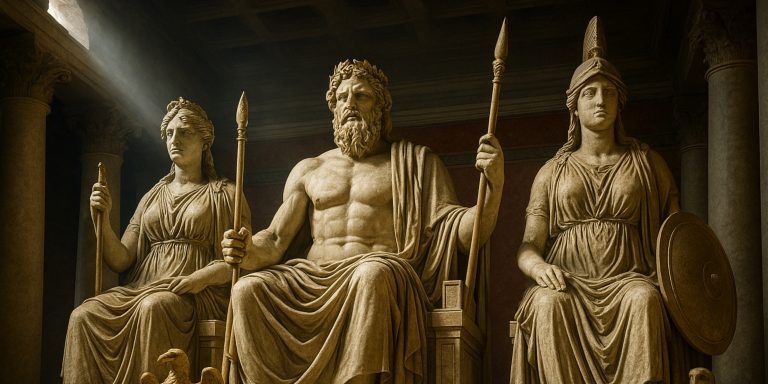
Oda Nobunaga was a revolutionary figure in Japanese history, known for his bold military campaigns, early adoption of firearms, and efforts to unify a fragmented Japan in the 16th century. He broke away from tradition, crushed powerful rivals, and laid the foundations for the Tokugawa shogunate.
Arms and Armour
Nobunaga’s approach to warfare was shaped by his embrace of innovation and modernisation. He did not cling to the romantic ideal of sword-wielding samurai but instead sought effective, scalable tools of war.
Weapons Used
- Matchlock firearms (Tanegashima)
Nobunaga was one of the first Japanese daimyō to deploy matchlocks in large numbers. By the 1570s, he had integrated thousands of firearms into his ranks, often coordinating volleys and timing for devastating effect. - Yari (Spears)
He standardised the length of spears used by ashigaru infantry to between 5.5 and 6.4 metres, forming spear walls that could hold against cavalry. - Naginata and Tachi
Traditional polearms and curved swords were still used by his samurai officers and cavalry, though increasingly as secondary arms. - Armour
His soldiers wore lamellar or brigandine-style armour, often lacquered. Nobunaga himself reportedly favoured Western-style garments and helmets later in life.
Military Engineering
- Built extensive logistics networks, roads, and supply routes.
- Used branch castles to maintain pressure during sieges.
- Employed blacksmiths, carpenters, and miners alongside soldiers to support fast mobilisation and fortification.
Battles and Military Acumen
Nobunaga’s career is marked by strategic flexibility, careful planning, and an unrelenting pace. He won not through brute force alone, but through superior timing, innovation, and exploitation of enemy weaknesses.
Major Battles
- Battle of Okehazama (1560)
A surprise attack on a vastly superior Imagawa force. Used terrain and a thunderstorm to conceal movements and rout the enemy. - Siege of Inabayama (1567)
A rapid and successful siege of Saitō Yoshitatsu’s mountain stronghold, securing Mino Province. He later renamed the area Gifu and used it as a political base. - Siege of Mount Hiei (1571)
Destroyed the warrior monks of Enryaku-ji. Though brutal, the campaign neutralised a persistent military and ideological threat. - Battle of Nagashino (1575)
Perhaps his most iconic victory, achieved alongside Tokugawa Ieyasu. Massed firearms fired from behind wooden stockades devastated the cavalry charges of the Takeda clan.
Where to See Artefacts from Nobunaga’s Reign
Key Museums and Sites
- Azuchi Castle Ruins (Shiga Prefecture)
The remains of Nobunaga’s grand fortress, once symbolising his centralised power and Western influences. The adjacent museum displays architectural reconstructions and battlefield artefacts. - Nobunaga no Yakata Museum (near Azuchi)
Contains replicas of the Azuchi Castle keep and interactive exhibits about Nobunaga’s administration and wars. - Honno-ji Temple (Kyoto)
Site of his assassination in 1582. The adjoining Takuramonokan exhibits weapons, scrolls, and portraits associated with his life. - Kiyosu Castle Museum (Aichi Prefecture)
Exhibits include period weapons, Nobunaga-related documents, and reconstructions of his early military campaigns. - Kiyosu Historical Museum
Contains a preserved matchlock gun believed to be linked to Nobunaga, as well as letters, spectacles, and personal effects.
Latest Archaeological Findings
Recent excavations continue to shed light on Nobunaga’s campaigns:
- Ichijōdani ruins show fire damage and destruction consistent with Nobunaga’s burning of the Asakura stronghold in 1573.
- Mount Hiei excavations reveal that the temple complex may not have been entirely destroyed, suggesting later historical accounts may have exaggerated its devastation.
- Azuchi Castle digs uncovered advanced stonework and imported ceramics, confirming Nobunaga’s wealth and Western ties.
The Seven Swords Takeaway
Oda Nobunaga’s legacy is complex. He was a pioneer of modern warfare, an early unifier of Japan, and a ruthless tactician. He challenged centuries of tradition and reshaped the military and political landscape.
Though his life ended violently at the hands of his own retainer, Akechi Mitsuhide, Nobunaga’s reforms and victories paved the way for Toyotomi Hideyoshi and, ultimately, the Tokugawa shogunate.
His memory is preserved in museums, ruins, literature, and Japan’s collective imagination—equal parts visionary, tyrant, and architect of the early modern state.
Watch the documentary:



